Sigma Xi 2017 Student Research Showcase
Math & Computer Science
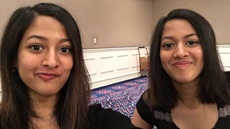 A Cancer Driver Gene Predictive Model for the Discovery and Identification of Cancer Driver Genes
A Cancer Driver Gene Predictive Model for the Discovery and Identification of Cancer Driver Genes
Adhya and Shriya Beesam,Plano East Senior High School
There is currently no accurate method for identifying the causal “driver genes” in cancer. The lack of a specific understanding of cancer’s genetic landscape has also led to inefficiency in drug treatment and early diagnosis. In this project, a novel predictive pipeline utilizing machine learning was developed for cancer driver gene prediction.
.jpg?sfvrsn=d5a3b958_2&MaxWidth=230&MaxHeight=&ScaleUp=false&Quality=High&Method=ResizeFitToAreaArguments&Signature=FA7605C7D3C4EB18352F58423568CE0F) CastMinder - Embedded Smart Sensors and Companion Software to Help Prevent Complications and Increase Healing Rate in Orthopedic Casts and Splints
CastMinder - Embedded Smart Sensors and Companion Software to Help Prevent Complications and Increase Healing Rate in Orthopedic Casts and Splints
Alexander Wulff, Skaneateles High School
CastMinder is a complete orthopedic cast and splint monitoring system. Embedded sensor nodes underneath casts and splints collect data about the cast environment, which is sent to an iOS app. This iOS app can analyze incoming data to determine if patients are at risk of developing harmful complications.
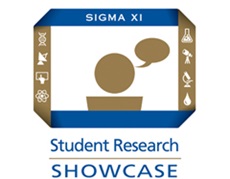 Using a Drone as an Autonomous Ultrasound Scanner
Using a Drone as an Autonomous Ultrasound Scanner
Bahaa Harraz, Centennial High School
This project is centered around combining two new pieces of technology, wireless ultrasound probes and drones, to create a machine that can autonomously scan marked patients in emergency situations where personnel may not be available..
.jpg?sfvrsn=f5a3b958_2&MaxWidth=230&MaxHeight=&ScaleUp=false&Quality=High&Method=ResizeFitToAreaArguments&Signature=84D13529D3AB596178AA9E165D2CA1B5) Assessing Variable Importance Nonparametrically using Machine Learning Techniques
Assessing Variable Importance Nonparametrically using Machine Learning Techniques
Brian Williamson, University of Washington
Research scientists often measure more features than we believe are truly associated with an outcome of interest. We then obtain a parsimonious model either using a priori information or variable selection tools, which leads to questions about the "importance" of the variables we selected. We propose an extension of ANOVA which leverages machine learning tools to nonparametrically estimate the proportion of the total variability in the outcome explained by a single feature or group of features.
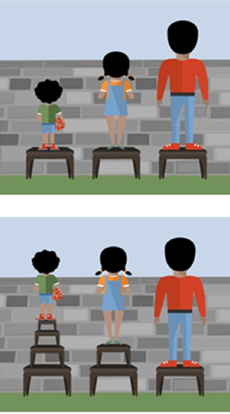 A Study of the Social Determinants of Health to Examine Health Disparities in Florida
A Study of the Social Determinants of Health to Examine Health Disparities in Florida
Eeshani Behara,American Heritage High School
This study shows how county data analysis can be used to drive specific localized interventional plans to reduce health disparities in similar areas of a State.
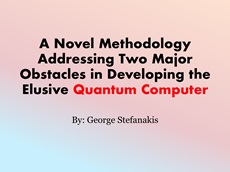 A Novel Methodology Addressing Two Major Obstacles in Developing the Elusive Quantum Computer
A Novel Methodology Addressing Two Major Obstacles in Developing the Elusive Quantum Computer
George Stefanakis,Bronx High School of Science
This study built on the attempts of others by analyzing obstacles inhibiting the quantum computer through an alternative scope which has its foundations in quantum physics.
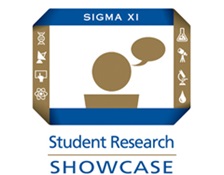
New Algorithm for Computational Diagnosis of Diseases with Framework for Artificial Intelligence Implementation
Nikhil Devraj,Bronx High School of Science
The presentation is that of a new algorithm used to diagnose disease, given patient characteristics. I relay the steps taken in this algorithm, which culminate in the creation of a list of probabilities of diseases for doctors to use in their decision.
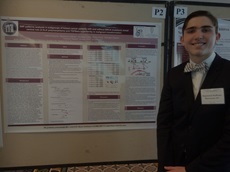
Computational Analysis of Intron Retention Events in Alternatively Spliced mRNA
Raymond Huffman, Manhasset High School
Intron retention occurs when a region of DNA intended to be spliced out and removed before proteins are constructed is instead included in the final mRNA transcript. This research establishes a novel model for the identification of intron retention events.
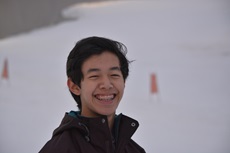 Engineering Improvement of a Potent Monoclonal Antibody Against Respiratory Syncytial Virus Using Structure-Based Computer Modeling
Engineering Improvement of a Potent Monoclonal Antibody Against Respiratory Syncytial Virus Using Structure-Based Computer Modeling
Sean Le, Thomas Jefferson High School
Respiratory syncytial virus (RSV) infections are a common cause of hospitalizations in infants, resulting in 57,000-120,000 hospitalizations in the U.S. annually. Synagis®, the current therapy for RSV infection prevention has limited effectiveness, and must be given five-six times during the RSV season. A recently discovered monoclonal antibody, AR-201, has shown to be more potent than Synagis®. Our goal is to use structure-based computer modeling to engineer AR-201 to prolong its time (half-life) in the blood, thus reducing its dosing frequency to optimally once during the RSV season.
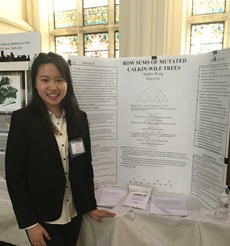 Row Sums of Mutated Calkin-Wilf Tree
Row Sums of Mutated Calkin-Wilf Tree
Sophia Wang, Bronx Hiogh School of Science
This paper investigated the relationship between sums of distinct Calkin-Wilf trees, in the hopes of determining a formula to compute the sum of all the terms in any given row of a tree with any roots.
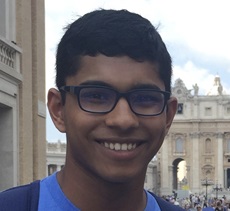 Hello Criminals! Meet Big Data: Preventing Crime in San Francisco by Predicting It Without Bias
Hello Criminals! Meet Big Data: Preventing Crime in San Francisco by Predicting It Without Bias
Tarun Amarnath, Saint Francis High School
The prevalence of technology in San Francisco hides a hidden undercurrent of crime in the city. This experiment uses Azure ML and Python to predict without bias the category of crime likeliest to occur at a certain time and location in San Francisco.